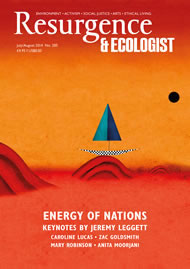In his earlier book The World Without Us, Alan Weisman considered how the Earth could heal if the overwhelming pressures exerted by humanity were removed. This time round, he examines whether it is possible for Homo sapiens to exist in harmony with the rest of creation.
Weisman tackles the biggest issue head-on with the title of the first chapter, The Battle of the Babies. Quite simply, there are too many people and too few resources to go round.
Running through the book are themes of food, water, religion – and time ticking by. We find fundamentalist Israelis and fundamentalist Palestinians both believing that sheer numbers will count when they fight over the last drop of water. With 98% of the river Jordan’s flow allocated before it leaves the Sea of Galilee, and West Bank taps running only twice a week, the endgame must be nigh.
The pressures on everyday life in the developing world are graphically described. Families in Niger are weeping because they are being crushed by their children.
In India, the soaring population is contrasted with falling water levels in what is described as “hydrological suicide”. In the Punjab, wells dug 100ft in 1970 have been rebored to 500ft and new ones are going in at 1,000ft.
The US 9/11 Commission noted that “a shaky nation with too many people, running out of water and driven to mayhem becomes an entire planet’s concern.”
The impact of religion is examined in each place Weisman documents. We see the Papal Commission on Population and Birth Control voting 69–10 in favour of relaxing sanctions against artificial birth control, but being vetoed to prevent the undermining of the doctrine of Papal Infallibility (only introduced in 1870, in wholly different circumstances). However, on the ground in the Philippines, we find a village priest being told by his community: “You look after the spirit, and we’ll look after the body.”
In Niger, an Imam tells his people: “To stop producing children on the pretext of difficulties feeding them goes against a pact between Muslims and God.”
In stark contrast, Weisman takes us to Iran. He explains how Ayatollah Khamenei reversed a policy to breed an army of 20 million in the war against Iraq (which led to over nine births per woman), and replaced it with a policy designed to achieve a replacement rate of 2.1 births per woman, in the most stunning reversal of population growth in human history: “When wisdom dictates that you do not need more children, a vasectomy is permissible.”
Hope lies in our ability to self-regulate, as demonstrated in Iran and China. Wherever we are, the key is contraception and education. “You save women, so women can save the world.” We learn that 75% of sexually active women in the developing world now have access to contraceptives – saving 218 million unwanted births a year. We also learn that, on average, women denied access to education produce six children, those who go to secondary school have 1.9, and graduates have only 1.6.
Weisman compares our impact on the environment to the devastating effect of the asteroid that is said to have wiped out the dinosaurs – an impact defined by Paul Ehrlich and John Holdren as number of people times level of consumption times the technology needed to produce what they consume. Although the analysis of population is compelling, Weisman fails to address the second part of the equation, merely quoting Ehrlich in saying, “There is no condom for consumption.”
Real hope requires this to be answered too.






